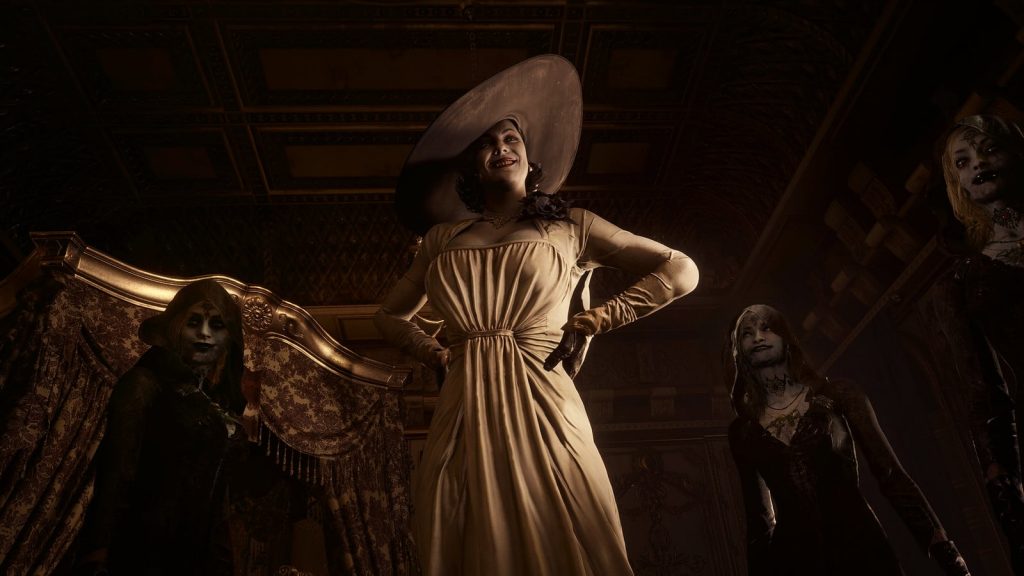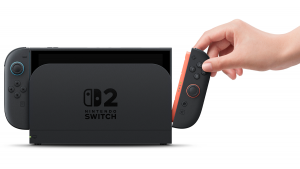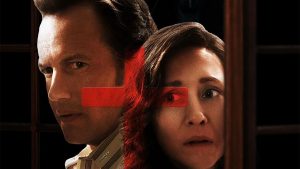Exclusive: Capcom Talks Bringing Resident Evil Village To PSVR 2, Future Plans & More


Resident Evil Village is easily one of the best experiences available for PSVR 2 at launch. Last week, we spoke to Capcom over Q&A about bringing Village’s VR Mode to life on PlayStation VR2 – here are the highlights, with a full transcript of the Q&A below.
Given Resident Evil Village originally released for consoles and PC in 2021, it’s quite amazing that the game’s subsequent VR Mode feels right at home on PSVR 2. While there are still elements that give away the game’s flatscreen-first design, it’s nonetheless an immersive VR experience with unique features that accommodate for the challenges and nuances that come with the medium.
“The main story mode [of Village] was not developed with VR in mind,” confirmed Capcom’s Kazuhiro Takahara, Director of Resident Evil Village VR Mode, in a Q&A over email. “The game contained a lot of elements that made adapting it to VR a very difficult project.”
One of these elements was the change in controls. On consoles, switching between weapons and item management is all done via the d-pad or other physical buttons. On PSVR 2, there’s not enough buttons to map those same actions to the Sense controllers, but the studio felt that something more VR-native was needed regardless. “Pressing buttons to switch weapons would have really deviated from our main goal of creating an immersive VR experience,” said Takahara. “We tried to think of an approach that would fit Ethan. That led us to paying attention to the coat he wears, and the idea of having his clothing serve as uniquely VR ‘equipment slots’ was born.”

Takahara also cites designing how the player controls firearms in VR as another big challenge. The team wanted to accurately translate the Resident Evil series’ realistic deception of weapons without designing an overly cumbersome system that prioritized realism at the expense of exciting gameplay. “We put a lot of trial and error into getting the feeling right and making it seem like you were handling a real firearm while also having the inputs be intuitive and unobtrusive. That goes for aspects outside of control mechanics as well. One of the biggest challenges was to implement features like haptic feedback and extra sound effects to make everything as ideal as possible.”
According to Takahara, preserving the high fidelity of Village’s 2D release was not the difficult part of bringing the game to PSVR 2. “However, maintaining 60fps through every scene and creating an enjoyable VR experience at a good frame rate required a lot of effort,” he told us. “Of course, simply dropping the resolution could allow us to raise the frame rate, but we did not rely on that.” Instead, the team made use of PSVR 2’s eye-tracked foveated rendering, alongside other VR-specific optimizations, which resulted in the game running at 60fps, reprojected up to 120Hz in headset.
Village is now the third mainline Resident Evil game or remake playable in VR, with a fourth – Resident Evil 4 Remake’s PSVR 2 content – on the way. Takahara gave two main reasons why he thinks the series is a good fit for virtual reality. “First, it’s the realistic environments and scenery. These are ways the Resident Evil series communicates fear. There is a sense of elaborateness that is a unique characteristic of the series that goes very well with the immersive experience that is VR,” he said. “Secondly, there’s an appeal to becoming the heroes of the Resident Evil series.”

When asked about whether future entries in the series might support VR, Takahara was tight lipped. “I can’t comment on our future plans, but I will say that our development teams are always looking to tackle new challenges.” Likewise, he told us that “at this time” there are no plans to bring Village’s Mercenaries mode or DLC content, such as Shadows of Rose, to PSVR 2. However, he did mention that a “very large majority” of PSVR 2 owners have tried out Village’s VR Mode on PSVR 2 since launch.
If you’d like to read more, the full transcript of our Q&A with Kazuhiro Takahara follows below. Alternatively, you can read more of our thoughts on the game in our Resident Evil 8 Village PSVR 2 Review.
UploadVR Q&A: Capcom’s Kazuhiro Takahara, Director, Resident Evil Village VR Mode
Harry Baker: First of all, congratulations on launching VR Mode for Resident Evil Village on PSVR 2. It is one of my favorite PSVR 2 experiences so far and I think the team did a fantastic job at bringing the game to life from a new, immersive perspective. How does the team feel after launching Village’s VR Mode on PSVR 2?
Kazuhiro Takahara: Thank you! It’s an honor to have Resident Evil Village be a PlayStation VR2 launch title. We’ve been thrilled to receive so much positive feedback from players and to see everyone enjoying the game. The development team is extremely happy that fans are having the exact experience we aimed for with VR Mode. It’s great seeing them having fun in VR due to the heightened sense of fear it provides – even if they’ve already played the non-VR version – and enjoying the VR gun controls and other new additions. Translating Resident Evil Village into VR took a tremendous amount of effort, but knowing all the PS VR2 players out there are in their headsets feeling what it’s like to become Ethan Winters makes it all worth it.
Baker: There are now three – soon four – Resident Evil games playable in VR, across many different headsets. What do you think makes the Resident Evil series such a good fit for virtual reality?
Takahara: I think there are two main reasons. First, it’s the realistic environments and scenery. These are ways the Resident Evil series communicates fear. There is a sense of elaborateness that is a unique characteristic of the series that goes very well with the immersive experience that is VR. However, that’s not to say the more realistic, the better. Using the high performance and impressive visuals we can achieve through RE ENGINE to portray a world that is both believable and outlandish, and fuse that with the experience and control methods only VR games can provide, creates such a uniquely unified result. Because of this, even if a different series were adapted to VR, it would not duplicate the experience Resident Evil provides in VR.
Secondly, there’s an appeal to becoming the heroes of the Resident Evil series. Ethan, who first appears in Resident Evil 7 biohazard, overcomes so much to save the world. And in Resident Evil 4, Leon is an agent for the president of the United States, who stands up against evil and manages to look cool while doing it. I don’t think any fan of the Resident Evil series would want to pass up the experience of seeing the world from their perspectives.

Baker: When did you start work on Village’s VR Mode and what was the development process like? Was a VR mode always planned, or was it an idea you came up with late in development/after launch?
Takahara: Since we saw the positive reception the VR mode for Resident Evil 7 had, we considered a VR mode for Resident Evil Village early on. However, the main story mode was not developed with VR in mind. The game contained a lot of elements that made adapting it to VR a very difficult project.
Baker: Two mainline Resident Evil games now offer support for VR headsets, and the upcoming RE4 remake will also support VR. Do you anticipate future Resident Evil games will also support VR?
Takahara: I can’t comment on our future plans, but I will say that our development teams are always looking to tackle new challenges.
Baker: What were the biggest challenges the team faced while developing VR Mode for Village?
Takahara: The biggest challenge was designing how firearms controlled. The guns themselves are very realistic and are close to the real thing. However, the experience we wanted to deliver with the gameplay was not only ‘realism.’ The Resident Evil series often has realistic portrayals of guns, but trying to create an operation method that mirrors reality using VR controllers would complicate matters. That wouldn’t necessarily be a good thing, so finding the right balance between realism and exciting gameplay was something we gave a lot of time and effort.
We put a lot of trial and error into getting the feeling right and making it seem like you were handling a real firearm while also having the inputs be intuitive and unobtrusive. That goes for aspects outside of control mechanics as well. One of the biggest challenges was to implement features like haptic feedback and extra sound effects to make everything as ideal as possible.
Baker: Are there plans to add support for Village’s DLC content and The Mercenaries mode to the VR Mode on PS V2?
Takahara: We do not have any plans at this time.

Baker: Do you have any indication of how successful VR Mode for Village has been, or how many PSVR 2 players have tried out Village’s VR Mode since launch?
Takahara: I can’t share exact numbers, but I have heard that a very large majority of PS VR2 owners have played Resident Evil Village in VR.
Baker: Was it a challenge to optimize performance in VR Mode to ensure the game runs smoothly on PSVR 2, while also still preserving the fidelity of the original 2D release?
Takahara: Displaying the same quality as the PS5 version of Resident Evil Village on PS VR2 was not difficult. The development environment of the PS5 and PS VR2 is very good, and with the abilities RE ENGINE allows us, our development team was able to do this without many issues.
However, maintaining 60fps through every scene and creating an enjoyable VR experience at a good frame rate required a lot of effort. Of course, simply dropping the resolution could allow us to raise the frame rate, but we did not rely on that. To make it possible to retain the same level of quality, we utilized foveated rendering, which involves eye tracking, as well as many other optimizations specifically for this VR Mode. In the end, we were able to implement graphics that take advantage of the unique aspects of the PS VR2 hardware.
Baker: VR Mode includes some VR-specific interactions, such as opening Ethan’s jacket for items and storing weapons across Ethan’s body. What led the team to adding in these VR-specific interactions?
Takahara: The PS VR2’s Sense controllers do not have a D-pad that you would find on gamepads like a DualSense or DualShock controller. The D-pad is what is used to switch weapons in Resident Evil Village, but that was not available for us for the VR Mode. So, we had to devise some other way to do this, and that’s where these implementations came from.
Even if we had had a D-pad to work with, pressing buttons to switch weapons would have really deviated from our main goal of creating an immersive VR experience where you felt as if you actually are Ethan, so we knew we had to come up with something else. From there, we tried to think of an approach that would fit Ethan. That led us to paying attention to the coat he wears, and the idea of having his clothing serve as uniquely VR ‘equipment slots’ was born.
Raising both hands to guard was also something that was rooted in wanting to create a natural method that felt as if you were playing as Ethan. Of course, a lot of trial and error was involved here too, but that is what led us to these VR-specific interactions.

Baker: What other VR games inspired you or guided the team while creating VR Mode for Village? Did other popular VR releases, such as Half-Life: Alyx or The Walking Dead: Saints & Sinners, serve as reference points for the weapon and interaction design in Village’s VR Mode?
Takahara: In adapting Resident Evil Village to VR, one of our main goals was to deliver a VR experience that fans would be satisfied with and enjoy. So, honestly, much of our inspiration and reference was the feedback and impressions of Resident Evil Village players.
Baker: And last of all – what’s your favorite moment of the Village campaign to play in VR Mode on PSVR 2?
Takahara: The cutscenes where you first encounter Lady Dimitrescu and her three daughters are really worth seeing. Taking in the castle decorations, and encountering the interesting characters, all while seeing everything through your own eyes, combined with elements like the headset’s vibration, make these scenes packed with so many different experiences and emotions.





